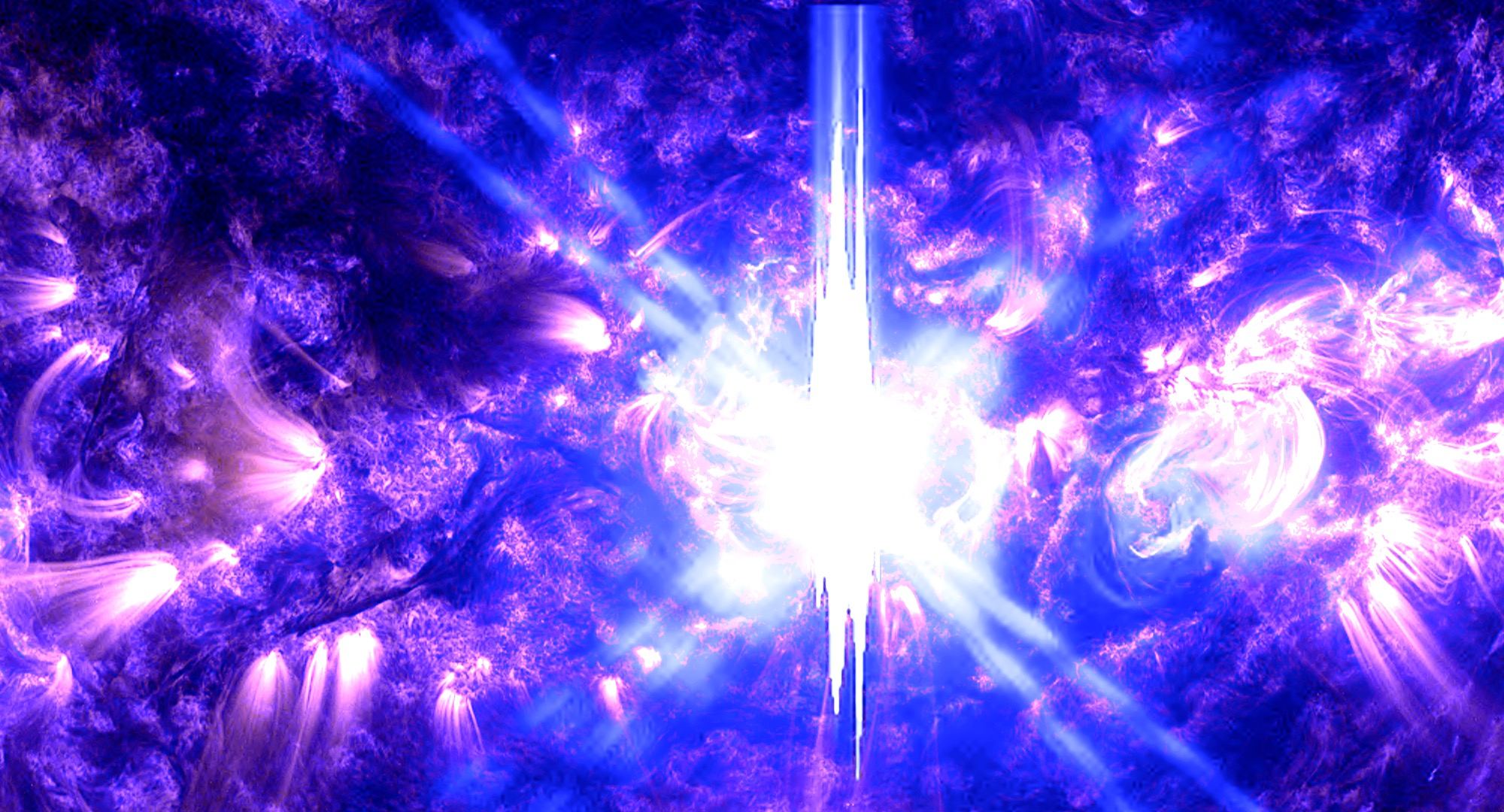
October 4, 2024 by Brian Koberlein
Collected at: https://www.universetoday.com/168809/the-unleashes-its-strongest-flare-this-cycle/
Yesterday the Sun released a huge solar flare, and it’s heading toward Earth! It’s nothing to worry about since it’s nowhere near as large as the Carrington Event of 1859, but it is large enough to give us some amazing aurora.
Large solar flares happen periodically. Quite literally, because the Sun goes through an 11-year cycle of lower and higher activity. Right now the Sun is near the maximum of a cycle, so we see lots of sunspots and flares. When astronomers first studied the cycle they could only measure the number of sunspots at a given time. Solar flares were largely invisible to early telescopes. But now with orbiting observatories such as the Solar Dynamics Observatory, we can capture images of solar flares in real time. Astronomers now categorize the strength of solar flares by the intensity of x-rays they emit, known as their x-class. The categories are numbered by power level, with each category double the previous one. So, for example, an X2 flare is twice as powerful as an X1 and half as strong as an X3.
This latest flare is rated as X9, which is much stronger than most solar flares. But stronger events have reached Earth before. In 1989 an X15 event triggered a regional blackout event in Quebec. In November of 2003 the Sun released an X28 solar flare, but most of it missed Earth. The 1859 Carrington Event occurred before astronomers developed the x-class rating, but it’s estimated to have been around X45. So this flare is huge, but it won’t put our electrical infrastructure at serious risk.
What it will provide, however, is an auroral light show. As the charged particles released by the flare reach Earth’s magnetosphere, many of them will be caught by our magnetic field and spiral along the field lines to strike Earth’s atmosphere in the polar regions. The impact will trigger the subtle and beautiful light shows known as aurora. If you happen to live far enough from the equator you might be able to see them in the next few days. To find out your chances, you can check out the National Oceanic and Atmospheric Administration’s Space Weather Prediction Center.

Leave a Reply